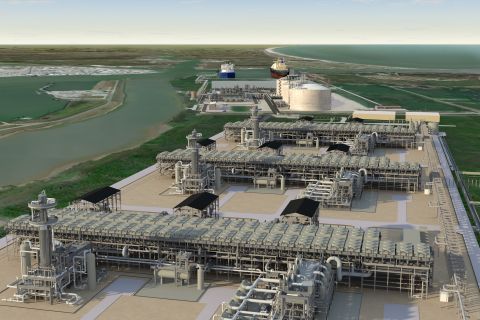In this issue of E&P you will find a number of columns and articles that forecast oil and gas activity for the foreseeable future. That near-term forecast is looking pretty rosy.
ExxonMobil tends to take a longer term view. It recently presented the results of its “2013 Outlook for Energy,” but don’t let the title fool you – the company is forecasting global energy supply and demand through 2040.

William Colton, vice president of Corporate Strategic Spending for ExxonMobil, noted that the forecast is generated from internal and public databases to give the company a roadmap for its business planning. The report reveals key findings about how the world will use energy, how much energy it will need, and what types of fuel will be used.
An interesting graph revealed the company’s bullish outlook on society’s ability to reduce its carbon footprint over time. While energy demand will continue to rise, energy supply requirements will not follow suit if, as the company suspects, the global population becomes more energy-efficient and moves to cleaner fuels. Colton said that this would be the result of “improvements in energy intensity.” It also will result from economies changing over time. For instance, China is in a manufacturing-intense mode right now, but as it moves into more of a service-based economy, it will require less energy. With these types of energy efficiency improvements across all sectors, demand will drop by 500 quadrillion Btus annually compared to a scenario where more efficient use of energy does not occur.
Electricity generation will be the single largest consumer of energy through 2040, and of the fuel types available – coal, gas, nuclear, wind, and solar – natural gas comes out the clear victor. Coal is widely available but has an unattractive environmental footprint; nuclear energy faces an uphill battle with public perception; and wind and solar are intermittent power sources, requiring backup systems to maintain steady supply.
“Natural gas is the obvious choice,” Colton said, noting it has 60% lower COemissions than coal.
On the supply side, Colton said that conventional crude oil production will remain flat, while sources such as deepwater fields, tight oil, oil sands, and NGL will see significant growth due to advances in technology. “Deepwater production was barely on the radar screen in 2000, but it’s now expected to double by 2040,” he said.
Natural gas, meanwhile, is completely reinventing North America. The report predicts that North American oil demand will fall due to improved efficiency, and the continent should be a net exporter of both oil and gas by 2030.
I find this information to be somewhat refreshing after countless presentations showing expected demand growth followed by the question, “Where is this energy going to come from?” It sounds like human innovation and common sense might be two of the biggest solutions.
Recommended Reading
Segrist: The LNG Pause and a Big, Dumb Question
2024-04-25 - In trying to understand the White House’s decision to pause LNG export permits and wondering if it’s just a red herring, one big, dumb question must be asked.
Texas LNG Export Plant Signs Additional Offtake Deal With EQT
2024-04-23 - Glenfarne Group LLC's proposed Texas LNG export plant in Brownsville has signed an additional tolling agreement with EQT Corp. to provide natural gas liquefaction services of an additional 1.5 mtpa over 20 years.
US Refiners to Face Tighter Heavy Spreads this Summer TPH
2024-04-22 - Tudor, Pickering, Holt and Co. (TPH) expects fairly tight heavy crude discounts in the U.S. this summer and beyond owing to lower imports of Canadian, Mexican and Venezuelan crudes.
What's Affecting Oil Prices This Week? (April 22, 2024)
2024-04-22 - Stratas Advisors predict that despite geopolitical tensions, the oil supply will not be disrupted, even with the U.S. House of Representatives inserting sanctions on Iran’s oil exports.
Association: Monthly Texas Upstream Jobs Show Most Growth in Decade
2024-04-22 - Since the COVID-19 pandemic, the oil and gas industry has added 39,500 upstream jobs in Texas, with take home pay averaging $124,000 in 2023.




